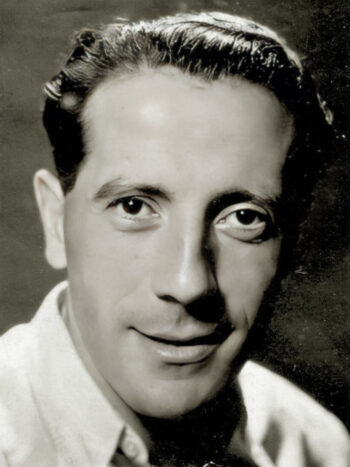Wetzler, Alfred

Alfred Wetzler (10 May 1918 – 8 Feb. 1988) was a Slovakian Jew who was deported to Auschwitz on 13 April 1942, where he became a clerk in one of the Birkenau camp sections. He managed to escape from Birkenau together with Rudolf Vrba on 7 April 1944. Once they both reached Slovakia, they co-authored the so-called Vrba-Wetzler Report, an extract of which eventually became the main part of the U.S. War Refugee Board Report. (For more details on this report, see the entry on Rudolf Vrba.)
In later writings, Wetzler added additional layers of lies to the mendacious Vrba-Wetzler Report. Among them are the following peculiar claims:
- In 1945, Wetzler published a paraphrased version of the Vrba-Wetzler Report with the indicative title Auschwitz: The Tomb of Four Million People, a number he repeated three times through the text. The four-million death-toll figure was invented by the Soviets on occupying Auschwitz, to dwarf their 1.5-million death-toll figure claimed for the Majdanek Camp, which they had conquered 5 months earlier. This figure has been debunked by orthodox historians as vastly exaggerated. Wetzler repeated that false figure in early 1946 when questioned by a prosecutor, insisting that, of the 4 million victims, 2.5 million were Jews.
- In late 1963, Wetzler wrote a deposition for the Auschwitz Museum in which he claimed that the (false) statistical data included in the 1944 report was also based on notes brought along, something Vrba had denied all along, insisting instead that all was based on his “excellent” memory. Wetzler also claimed that some Soviet PoW had given them a hand-drawn floor plan of the crematorium, thus contradicting Filip Müller, who had claimed this drawing as his own.
In 1964, a book by Wetzler was published under the pen name Jozef Lánik titled What Dante Didn’t See. With it, Wetzler dug himself even deeper into his mendacious hole. Here are some pertinent examples:
- He expanded on several pages on the false story of Himmler’s visit to Birkenau on the occasion of the inauguration of Crematorium II (with 2,000 victims rather than the 8,000 of the 1944 report). In this context he wrote about a window in a steel door of the gas chamber, through which peaked “Himmler, medical professors from Berlin, Hamburg, Münster, representatives of various companies,” etc. The problem is that the entire event is freely invented, and that there were no steel doors at Auschwitz.
- Wetzler claimed that the gas was poured into the ventilators, and that, inside the gas chamber, “tiny crystals are pouring out of the showers.” That was no accident as he repeated that claim four more times. However, the orthodoxy has it that the poison-gas gypsum pellets were poured into some Zyklon-B introduction devices. These “crystals” would only have clogged up pipes and showerheads without having any effect. Furthermore, the ventilators of this room were located in the building’s attic, with the ventilation openings and ducts placed along the basement room’s side walls.
- Wetzler claimed that Engineer Prüfer, from the Erfurt company Topf & Sons, had built the gas chamber. In fact, Prüfer only supervised the erection of the Topf cremation furnaces in all of the Auschwitz crematoria.
- Wetzler claimed that a second, larger gas chamber existed underneath the one inspected by Himmler and his entourage. No such thing existed.
- He claimed that Himmler insisted that soap dishes should be provided, and that more towels and soap ought to be handed out. This most certainly would never have happened, considering the mess it would have created and the effort necessary to retrieve and clean these items afterwards. In addition, no one takes towels into a shower.
- Synchronized with Vrba’s identical change in his 1963 book I Cannot forgive, Wetzler also increased the cremation capacity by reducing the time it allegedly took to cremate three corpses from 90 minutes (1944) to 20 minutes. In reality, it took them one hour to cremate one body.
- The total capacity of the crematoria grew from 6,000 corpses per day in 1944 to “6,000, 7,000, 8,000, and now perhaps even 10,000 corpses,” while the actual theoretical maximum capacity was 920 bodies per day.
- He reduced the total death toll to three million, although that’s still three times today’s orthodox figure. He even wrote that this number was included “at the end of the [1944] report,” but that’s a lie, too.
For even more details about this crucially important Auschwitz liar, see the entry on Rudolf Vrba with more details about the Vrba-Wetzler Report, as well as Mattogno’s analysis in Mattogno 2021, pp. 234-238.

You need to be a registered user, logged into your account, and your comment must comply with our Acceptable Use Policy, for your comment to get published. (Click here to log in or register.)